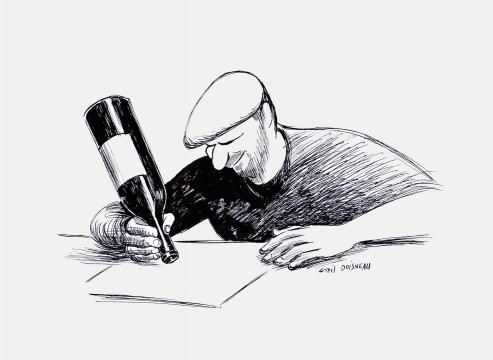
Consider the Rosé
What a winter! This year it seemed particularly endless, and we had to cling on to the hope of spring even more tenaciously this time around. Just as the weather pretended to get warmer, it suddenly slipped back into a frigid state affairs.
During that brief warm spell in April, I went into my cellar to dig up some rosé for the first BBQ of the year. I always have a few racks dedicated to aging rosés from regions in southern France like Corsica and Provence, as well as Sicilian rosatos from Etna and Faro. As I rummaged through the wines, I remembered when I visited Domaine Tempier in 2012 and Daniel Ravier served me a 1982 Tempier Bandol Rosé blind. I recall a wine with a beautiful copper hue and a nose that was still exuberant with notes of orange pekoe tea, dried flowers and the echo of some sort of red berry. The palate was thin, in a very nice way, with the energy of a marathon runner sprinting his last 200 meters. Solid yet fading. On the retro, there was a lingering taste of dried yellow fruit. This was one complex wine that withstood the test of time. Which brings me to my question : Why the fuck do we not drink more rosé? Why is it relegated to the dog days of summer by the pool or on the terrace of a tourist trap restaurant?
Rhetorical questions aside, I have always found it to be a shame that we do not find rosés on wine lists all year long, or on the shelves of the SAQ for that matter throughout the year. Many people say that most rosés suck, and for the large part, they are right. The wine industry created a marketing image of “cheery” rosés to be “simple” wines enjoyed during the heat of the night or the breeze of the beach. The industry obliges by churning out millions of liters of pure industrial wine-waste and brands them with names worthy of a nightmare in Disneyland. Most of them taste like a cross between cotton candy and Tylenol for Children. Quite disgusting actually.
But what of those stalwarts who make GREAT rosés? Wines made with love near the sunny shores of the Mediterranean and in the mountains of Corsica, Crete and Sardinia. Skillfully crafted to be drunk with grilled meats like succulent shoulder of lamb; fresh vegetables such as young artichokes, sweet peas, and new potatoes smothered in peppery oil; an aioli monstre with crunchy veg and salty cod; seafood like sweet prawns smothered in *fleur de sel *and butter? Or how about those big ripe tomatoes with a slab of Feta and few leaves of basil? Most rosatos in Italy are more like light reds, and pair so well with tomato sauces spiked with chili (think Amatriciana). You get the point.
I mean, if we drink white wines all year (at least I do), why don’t we drink rosé all year? I think of a few great sommeliers in the city like Vanya Filipovic, Guillaume Laliberté, Ryan Gray and Veronique Dalle who have worked rosé on their lists all year long, and hope more do as well. And if you think rosés don’t age, try cellaring some Bandol from Tempier, Pibarnon or Gros Noré; or the exquisite rosés from Yves Canarelli and Antoine Arena. You’ll be surprised with what you pop open a few years down the road. And if all else fails, I swear by the best paring in the world: a spliff of mellow weed blazed with a glass of Etna Rosato on a beach with a gentle breeze…
Santé